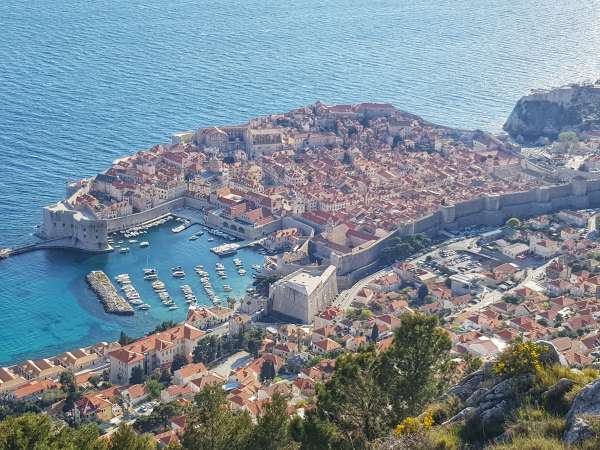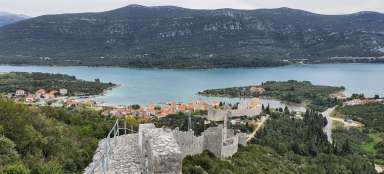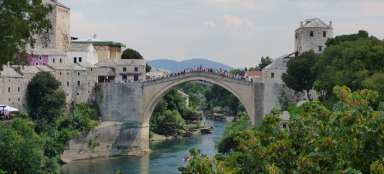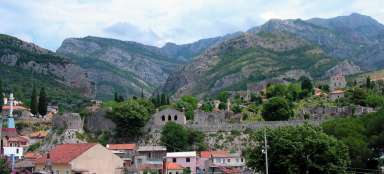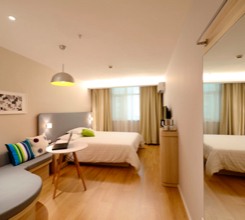Pearl of the Adriatic

Dubrovnik is located in the very south of Croatia. It is its exclave, separated from the rest of Croatia by a short stretch of coastline belonging to Bosnia and Herzegovina. The city has a rich history, which can be seen here at every step, ie rather a staircase. Dubrovnik is located on a steep slope, so you will not find too many barrier-free places here. For lovers of the Game of Thorns series, this is a Mecca that they cannot miss.
Republic of Dubrovnik
This port city has always prospered from maritime trade. In the Middle Ages, it was the center of the Republic of Dubrovnik, a naval republic that competed with similar government forces on the Adriatic coast. The republic experienced the peak of its power and prosperity in the 15th and 16th centuries, in cooperation with Ancona – the route Dubrovnik, Ancona, (Florence) and Flanders formed a counterweight to the Venetian Republic – the route Venice, Austria and Germany. In the 16th century, the large Dubrovnik fleet consisted of 180 large ships. The city was fortified by walls around its entire perimeter.
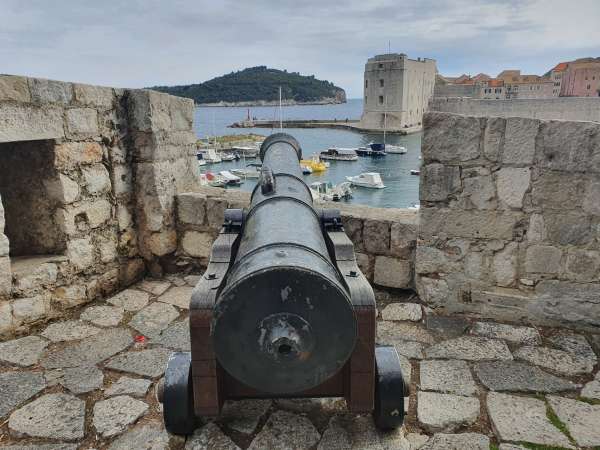
Entrance gate Ploče
Two gates led to the city from both sides of the original strait (Pile and Ploče). Through the Ploče gate, which is located in the southeast, you can get to the old town from the district of the same name. Right behind the entrance you can see the port.
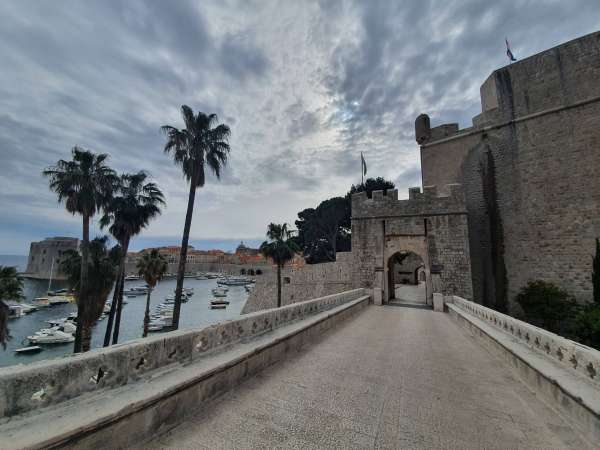
Pier near the old town
Just outside the Ploče gate you have a view of the dock. From here you can take a boat to two nearby islands near Dubrovnik – Koločep (in the archipelago of the Elaphite Islands) west of the town of Lokrum south of Dubrovnik.

The city walls
The old town of Dubrovnik is surrounded by massive walls, which have been preserved to this day. You can walk on them for the entrance fee, it is a walk of almost 2 km and below you is 25 meters deep and their width is 4–6 m and from the side of the sea 1.5–3 m. The walls were built in different periods, from 13. to the 17th century. They are complemented by towers and mass fortresses.

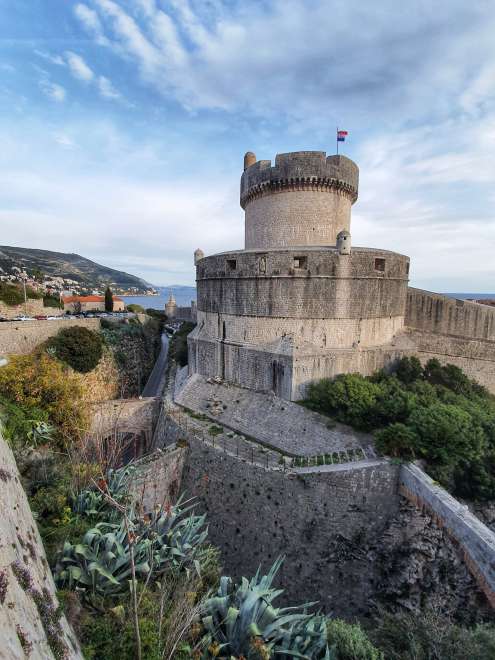
Minceta Tower
Iconic for the city is the tower on the north side of the city walls, Minčeta, monumental with a circular floor plan. It was completed in 1464. Numerous builders took part in its creation. The impetus for its construction was the Fall of Constantinople in 1453.
Fortress of St. John
The fortress on the southeast side of the city fortifications was built in the 16th century and protected the traditional port of Dubrovnik from attacks from the sea. It was built by the Dubrovnik builder Paskoje Miličević. The fortress is followed by a pier with a lighthouse at the end.

Bokar Tower and Lovrijenac Fortress
Another of the towers on the walls is on the west side of the city fortifications, the Bokar tower, which was built between 1461 and 1463 according to the project of the Florentine builder Michelozza Michelozzia. It is also known as Zvijezdan. A free-standing fortress Lovrijenac rises 37 meters above sea level across the bay opposite the tower. Its historical significance lay in the battles against the attacks of the Venetian Republic. It is used for various cultural events or marriages for couples.

Pile Gate
At the fortress is also the second of the main entrances to the city – Pile. He is also named after the adjacent neighborhood. There is a main bus stop in front of the gate. Dubrovnik provides a relatively busy bus service, so you can get to the center from a more remote part of the suburbs.
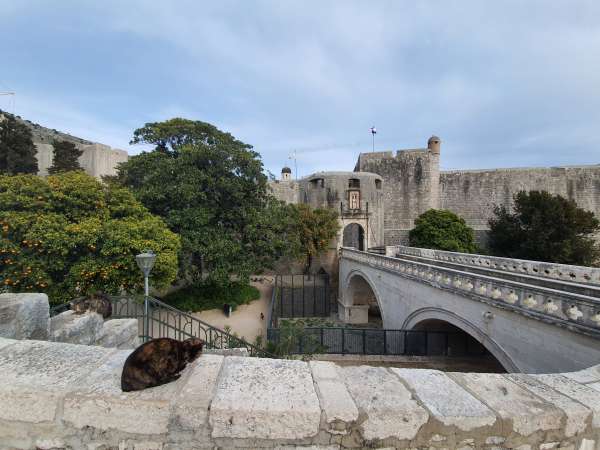
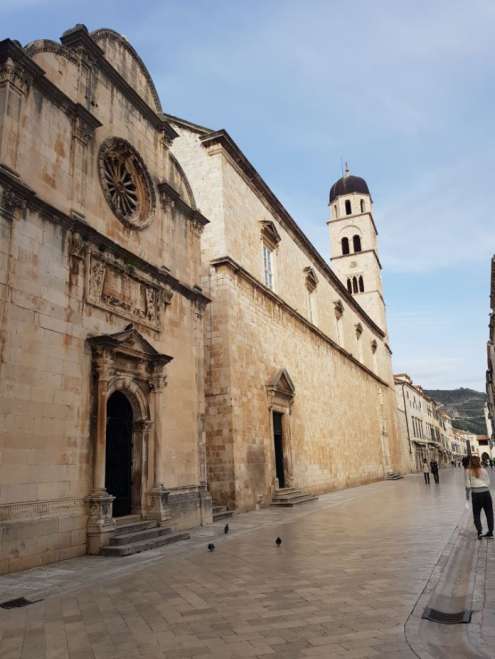
Franciscan monastery
Right behind the Pile Gate is the first monument from the 14th century Franciscan monastery with the adjacent church of Christ the Savior (Croatian Crkva svetog Spasa) from 1520. The Gothic-Renaissance portal is one of the elements of the building that survived the devastating earthquake at the end of the 17th century.
The Great Onofrio's Fountain
The Great Onofrio's Fountain cannot be overlooked in front of the monastery. It is a polygonal fountain with 16 sculptures of faces that spew water. The author is Onofrio della Cava from Naples and was built for public use, along with a small fountain on the other side of Platza. The fountain is a symbol of the city's water supply system, which was created in 1438 by drawing water from the Dubrovačka River, 12 kilometers away. The canal is still built into the new water supply. The round ceiling of the fountain has not been restored to its original shape because it was damaged by an earthquake in 1667.
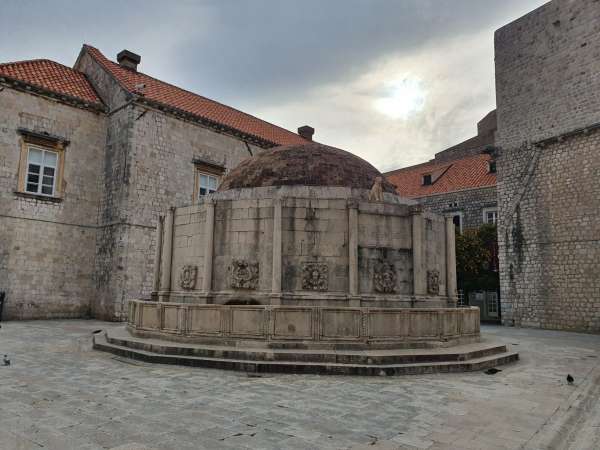
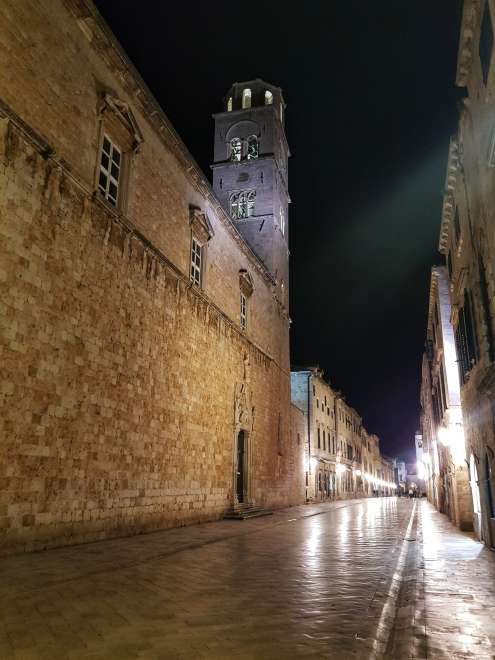
Stradun - main street
Stradun is the main street and promenade of Dubrovnik. Here you will find famous ice cream parlors, as well as other shops. In 1667, the town was almost destroyed by a strong earthquake, which killed about 5,000 people. The historic city center with its Romanesque cathedral, Gothic and Renaissance palaces, churches and monasteries collapsed. The renovation was then carried out according to a modern plan with a network of streets at right angles to each other. New streets were oriented perpendicular to the main street Stradun, their appearance and width were realized according to the Venetian model. Although the city regained its original glory and splendor, a number of unique buildings of Renaissance architecture and older styles were destroyed. After the restoration, the core of Dubrovnik acquired a Baroque character.
Sponza Palace and the clock tower
Sponza Palace is a Gothic-Renaissance palace designed by Dubrovnik master Paskoj Miličević and can be found at the end of the Stradun promenade at its very head. Next door is the clock tower, where the time is displayed digitally using flip-up windows with Roman numerals, every five minutes.
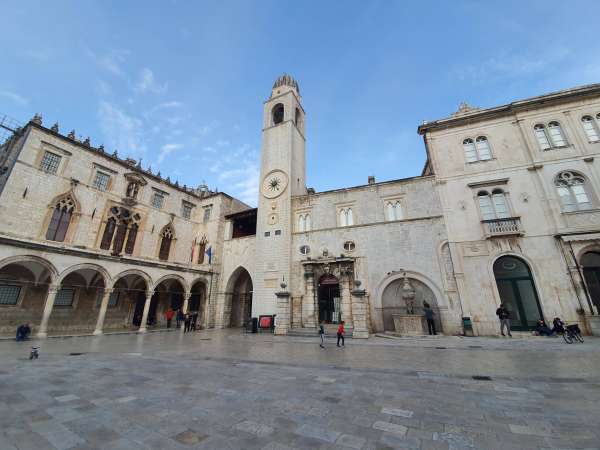
Prince's Palace
The Prince's Palace – the former seat of government and prince of the Republic of Dubrovnik is today a cultural-historical museum. The original name of Dubrovnik was Ragusa. The name Dubrovnik is of Slavic origin and with Italian, respectively. The Latin name Ragusa coexisted for several centuries. The Latin name appeared in various forms as early as the 10th century. The official name of the Dubrovnik Republic was in Latin, resp. Italian until 1808 Republica Ragusina. The Slavic name Dubrovnik first appeared in the 12th century, it spread widely at the turn of the sixteenth and seventeenth centuries in connection with the arrival of a larger Slavic population in the city.

Cathedral of the Assumption
Opposite the Prince's Palace you will find another landmark of the old town – the Cathedral of the Assumption of the Virgin Mary. It was built on the site of an older Byzantine church, which was destroyed by an earthquake in 1667 after numerous alterations and reconstructions. The current cathedral was built in the Baroque style between 1671 and 1713.


Alleys of Dubrovnik
After the earthquake, which destroyed a large part of the city, new streets formed parallel as if according to the ruler to the main promenade. They offer long windows, mostly topped stairs. Even the old town is situated on two hills. Only the promenade is straight, from which stairs lead to both sides.
Street hamby
You can get around the city from several agencies to places known from the Game of Thrones series, which recently fired the city into the top 10 places popular with tourists. Unfortunately, the city suffered greatly. This street Uz Jezuite, leading to the church of St. Ignatius, is known as the street hamby of the series.
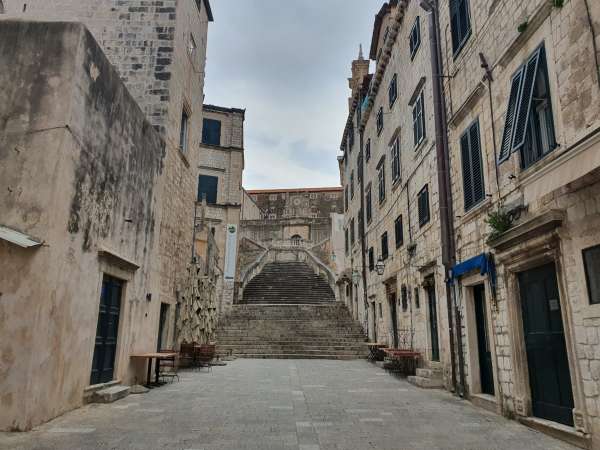
The interior of the church of St. Ignatius
After climbing the „hamba“ stairs, you will find the Jesuit Monastery and the Church of St. Ignatius in the Baroque style. In the past, the Collegium Ragusinum school also operated within the complex. If you want you can step inside and admire the beautifully painted interior.
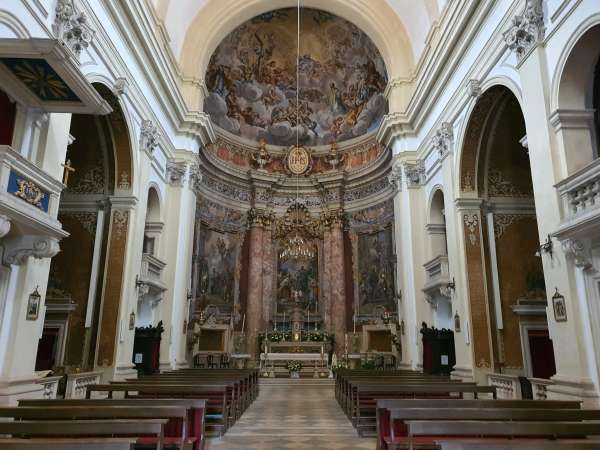
Banje city beach
On the south-eastern side of the city, a short walk from the Ploče gate, is a picturesque city beach for cooling off in the summer months. Here you will find the necessary facilities and a snack bar. The view of the walls of the steep city of Dubrovnik while swimming in the turquoise sea is worth it.
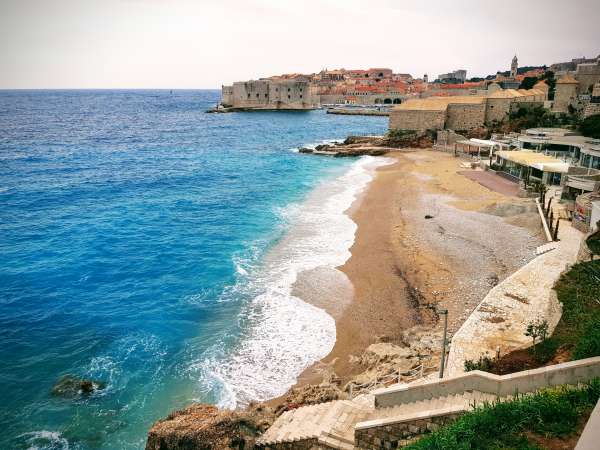
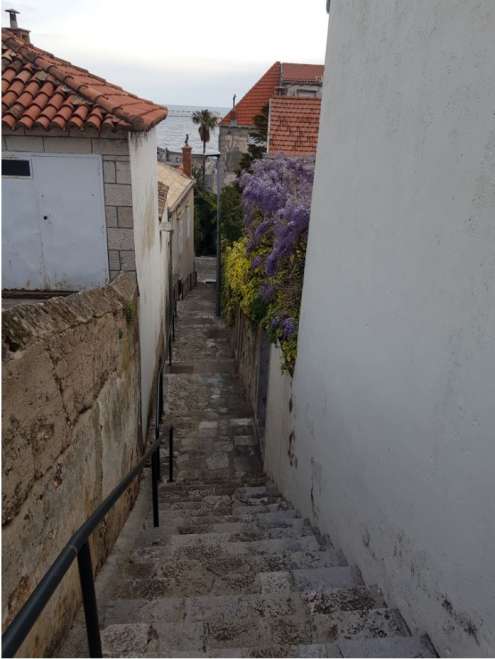
Steep streets to the hills
Due to the city's location on a steep cliff, the surrounding suburbs are pushed high up the hills. The alleys are narrow and full of stairs. All sorts of flora flows from the walls of houses closely stacked into the alleys. Especially popular is the purple flowering wisteria, which completes the romantic impression.
Views when climbing
As you climb the alleys vertically upwards, there are views of the old town and the red roofs of the surrounding houses.

Gruž Harbor and Franjo Tuđman Bridge
The port of Gruž, which is a few kilometers north-west of the old town, is also of great importance for the city's economy. Here you will find luxury yachts, huge steamers and historic sailboats. In the port there is also a market with fresh raw materials from local production, whether vegetables, fruits or fish. The Franjo Tuđman suspension bridge visible from afar above the port leads the main access road across the river Dubrovnik. The original construction of the bridge was developed in 1989, but the construction was stopped at the beginning of the Croatian War of Independence and the bridge was not completed until 1998.
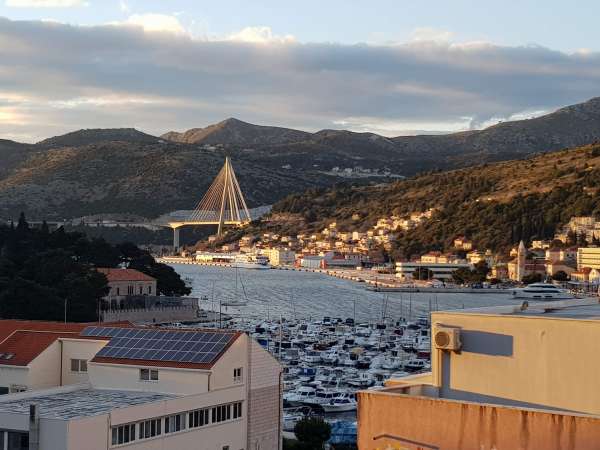

Cable car over the city
Since 2010, you can comfortably take a cable car to the cliff above the city. Alternatively, you can walk it like we do when the cable car does not run out of season. The peak called Srđ is 412 m from the sea. In addition to amazing views, you will also find the Fort Imperial and the memorial to the fighting in the Yugoslav war.
Dubrovnik in the palm of your hand
The views from the final station of the cable car are really beautiful. You can see the old city enclosed by the walls, the surrounding islands, the port of Gruž and the endless Adriatic Sea. When descending a jagged path under the cable car, if you choose this option (I recommend good trekking shoes, the path is very rocky), you will pass a cross vest with an artistic depiction of the way of Christ on metal plates.
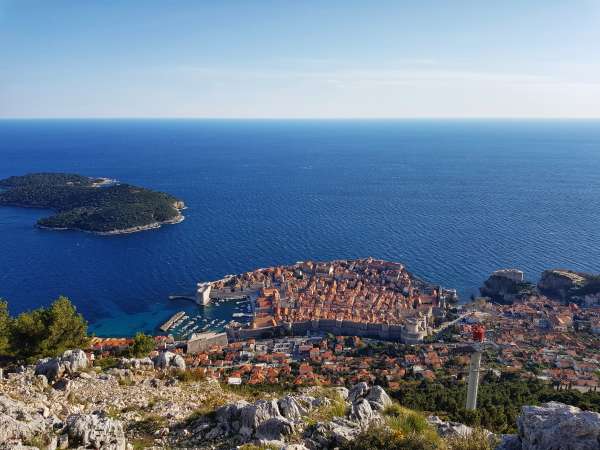
Dubrovnik old town
And the last close-up view of the old town of Dubrovnik goodbye. This place is really special, it has an incredible history that is evident to this day. It would be a shame to have it ruined by a mass of tourists, who will not even enjoy the city for the crowd. We had the opportunity to visit him during the covid and off-season in April and it was an unforgettable experience. Walking through the deserted city after dark was like walking around the castle after closing time.
